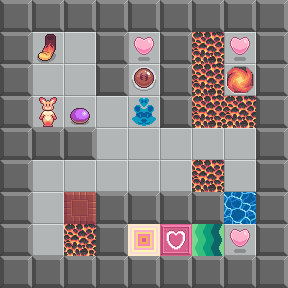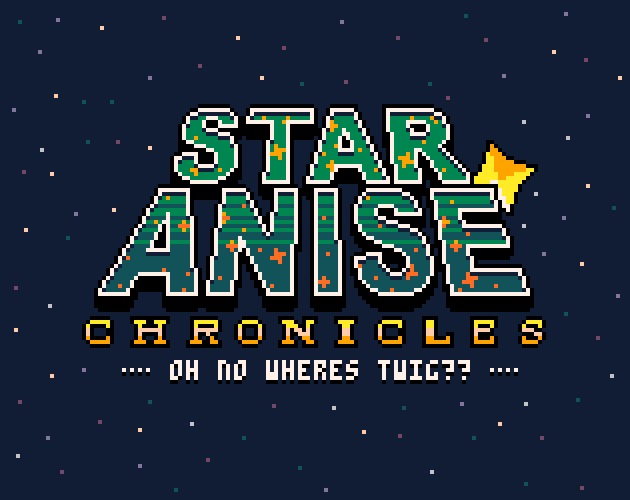You may recall that I once had the ambitious idea to write a book on game development, walking the reader through making simple games from scratch in a variety of different environments, starting from simple level editors and culminating in some “real” engine.
That never quite materialized. As it turns out, writing a book is a huge slog, publishers want almost all of the proceeds, and LaTeX is an endless rabbit hole of distractions that probably consumed more time than actually writing. Also, a book about programming with no copy/paste or animations or hyperlinks kind of sucks.
I thus present to you Plan B: a series of blog posts. This is a narrative reconstruction of a small game I made recently, Star Anise Chronicles: Oh No Wheres Twig??. It took me less than two weeks and I kept quite a few snapshots of the game’s progress, so you’ll get to see a somewhat realistic jaunt through the process of creating a small game from very nearly nothing.
And unlike your typical programming tutorial, I can guarantee that this won’t get you as far as a half-assed Mario clone and then abruptly end. The game has original art and sound, a title screen, an ending, cutscenes, dialogue, UI, and more — so this series will necessarily cover how all of that came about. I will tell you why I made particular decisions, mention planned features I cut, show you the tradeoffs I made, and confess when I made life harder for myself. You know, all the stuff you actually go through when doing game development (or, frankly, any kind of software development).
The target audience is (ideally) anyone who knows what a computer is, so hopefully you can follow along no matter what your experience level. Enjoy!
This is part zero, and it’s mostly introductory stuff. Please don’t skip it! I promise there’s some meat in the latter half.

![[articles]](https://eev.ee/theme/images/category-articles.png) Gamedev from scratch 1: Scaffolding
Gamedev from scratch 1: Scaffolding
![[updates]](https://eev.ee/theme/images/category-updates.png) Lexy’s Labyrinth
Lexy’s Labyrinth

![[dev]](https://eev.ee/theme/images/category-dev.png) fox flux, three years later
fox flux, three years later

![[process]](https://eev.ee/theme/images/category-process.png) Cheezball Rising: Collision detection, part 1
Cheezball Rising: Collision detection, part 1
